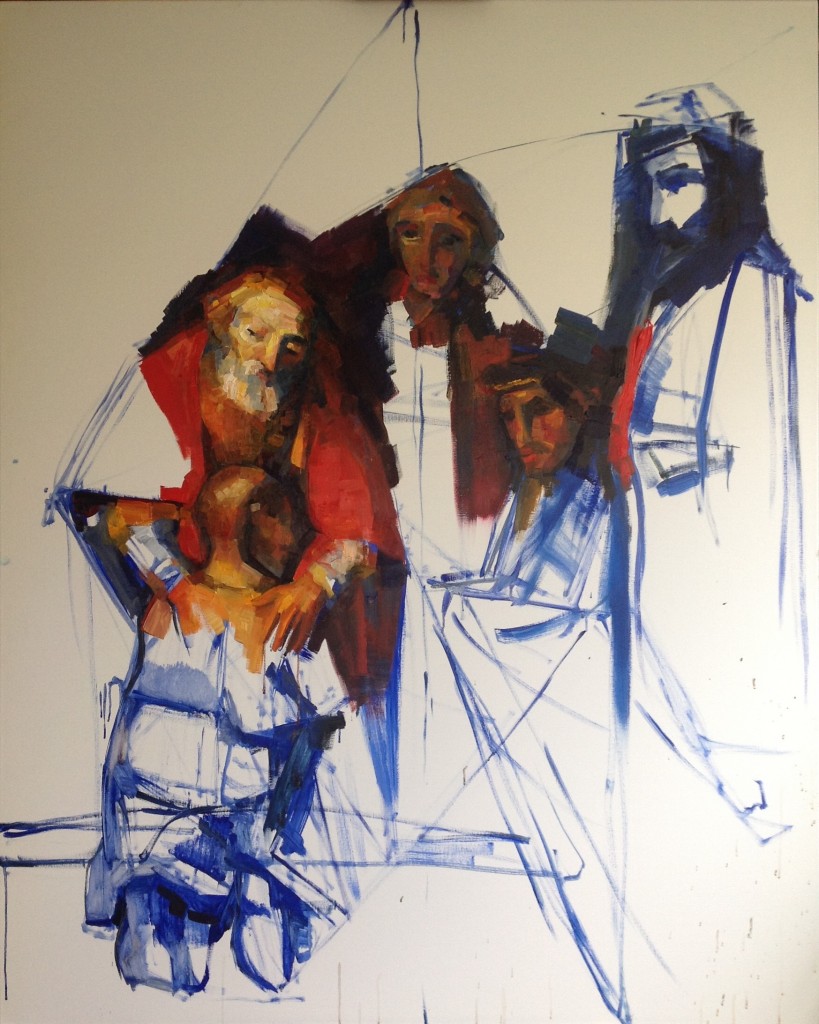 My little detour from the highway of the sonnet series continued over these two days.
My little detour from the highway of the sonnet series continued over these two days.
The beginning, last Friday, was so magically easy that I somehow got this crazy idea that I might complete this painting in a week if I put everything else on hold. And the connection was so strong that it pulled me in: I decided to pause the sonnet series for a week to work on this study.
One thing I understood during these two days is that this “complete within a week” idea is — to put it mildly — slightly absurd, and — what’s more important — it would strip the whole process of half its meaning. There is more to learn here than can be learned within a week’s time (even taking into account all the preliminary studies I did following my own program).
There are two “balancing acts” in this process (I am not sure that’s a good name for them, but I cannot find any better one at the moment). One is the balance between working (and seeing) the whole canvas and the development of focal areas. I guess it’s one of the challenges that come with such a large canvas; just one among many things to learn from Rembrandt.
The other balancing act is between trusting Rembrandt and trusting my own hand; the vision comes from Rembrandt, but my hand (my brush) has to have its freedom, its “organic” movement. This means there will be a lot of “technical” differences between my study and Rembrandt’s original — but something tells me that, for me at least, this is the only way to get to the essence of what Rembrandt has done here.
And I am not even so sure about the vision: it crossed my mind while painting today that our senses of vision just cannot be the same, since the environments in which they have been “trained” are so incredibly different. We rarely think about how the environment shapes our sense of vision — maybe not the physiology of the eye, exactly, but all the neural machinery that takes the eyes’ raw data and creates our visual reality for us. But it does — that’s why it’s so much easier for us to distinguish between faces of familiar anthropological types. I’ve read somewhere that infants distinguish apes’ faces as well as they do human faces; but after several months, their ability to distinguish human faces gets refined, while apes’ faces begin to seem very much alike.
And this is only the beginning. Rembrandt spent his whole life within a smallish area between Amsterdam and Leiden, and this means a very narrow range of natural lighting conditions. No Southern sun, no electrical light, no exposure to photos, let alone videos. No artificial pigments. No plastic. A modern human being like myself would generally spend a lot of time in a variety of artificial light, travel far and wide, and yet see even more places in photos and videos only. And then, of course, the whole history of art: the last three and a half centuries, and all the archeological stuff found and shown to public in the meanwhile. There is just no way my eyes could see “the same” Rembrandt’s eyes did, even if (or especially if) we are looking at the same painting, at the same old man and his family members. This fact is just something to be accepted, and worked into this study the best I can.